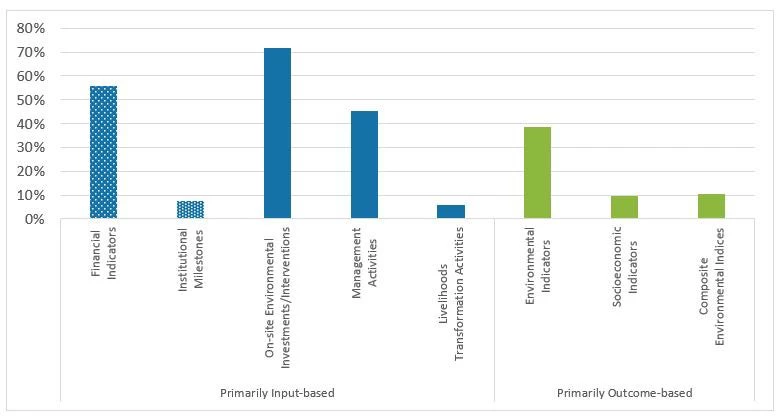
Water and sanitation data figures in Guatemala show a challenging reality. Nationally, 91 percent of the population has access to improved drinking water, an increase of 14 percent points since the establishment of the MDGs.
Despite the improvement in coverage in relative terms, in absolute terms there are still a significant number of Guatemalan households using water from precarious or unimproved sources such as unprotected wells, rivers, or lakes. In addition, water quality is a concern -- from the monitoring of 20% of the water systems in the country, 54% reported to be at high and imminent risk for human health.
As part of the Water Supply, Sanitation, and Hygiene (WASH) Poverty Diagnostic Initiative, implemented by the World Bank’s Water, Poverty, Governance, Health, Nutrition & Population teams in 18 countries, our work in Guatemala seeks to provide a careful examination of trends in access to water and sanitation and in corresponding linkages to poverty and health. It also reviews the governance structure and expenditure plans underpinning service delivery in the water supply, sanitation and hygiene (WASH) sectors in Guatemala.
Recently, the World Bank held an event in Guatemala City, Guatemala to share the findings and recommendations of the WASH Poverty Diagnostic of Guatemala. The event was co-chaired by the Government of Guatemala and the World Bank with introductions and commentary provided by the Minister of Finance and the Vice Minister of Health. Over 110 people representing government institutions, local governments, donors, NGOs, among others attended the event.
The report was well received. The cross-sectoral analysis between poverty levels, water and sanitation, and their relationship with nutrition indicators resonated with the participants a lot, given the importance and extensive awareness of the challenging context in Guatemala – one of the countries with highest chronic malnutrition rates in the world. There was a substantial agreement about the key challenges facing the Guatemalan WASH sector. We already mention some of them, but the following are also worrying:
- Almost half of all Guatemalans lack access to improved sanitation. While important gains have been made in expanding sewerage coverage, and open defecation is decreasing, only three departments met the national MDG target for sanitation. As public investments in the WASH sector have favored drinking water, sanitation coverage has fallen far behind, particularly in rural areas where coverage rates are still too low to ensure an adequate quality of life. In addition, it is also a concern that only 5% of sewage is treated.
- The disparity in access to improved drinking water and sanitation between geographical areas is evident, and the rural population remains disproportionately disadvantaged. This suggests there are variables that constrain the access to WASH services, such as geography, income levels, ethnicity, education of head of households and other household characteristics.
- Guatemala is an outlier in the region in terms of chronic malnutrition (stunting), and almost half of all children are stunted, an indication of the high levels of poverty and inequality in the country. The persistently high, chronic malnutrition rates in Guatemala indicate a lack of the most basic type of human capital–good health–driven in part by a lack of access to basic services. The report presents evidence that the access to and type of WASH services has an effect on children health.
- Average capital expenditure and spending efficiency in Guatemala is inadequate to meet current demands. Total expenditure as a share of national gross domestic product (GDP) in the WASH sector in Guatemala averaged significantly less than in the health and education sectors.
- Current institutional and organizational arrangements reveal multiple constraints to service delivery in Guatemala that affect the pace of increasing access to safe water and improved sanitation for the poorest. Specifically, the regulatory and management model governing the provision of WASH services in Guatemala is hindered by incomplete regulations and gaps and duplications in the roles and responsibilities assigned to actors at various levels of government, most notably a lack of national leadership and support to rural areas.
- Addressing the needs of the most vulnerable populations and achieving the SDGs will require major institutional reforms at the national and subnational levels.
- Closing the geographical gap and achieving the SDGs will require a dedicated sector policy that clearly defines the provision and quality of services in rural areas, with an emphasis on rural sanitation and hygiene. However, the policy must be aligned with sector planning instruments and budget to make sure the policy can be implemented.
- Combatting childhood disease will require multi-sector engagement and coordination to improve hygiene, accompanied by a rigorous service-provision program and a knowledge agenda.
- Providing sustainable delivery of public services and meeting the SDGs will require increased levels of investment and greater budget execution. First and foremost, from a public expenditure perspective, the government should prioritize the WASH sector and maximize public investment in it.
- Increasing accountability within the sector and improving decision-making to better inform policy will require access to timely, relevant, accurate, and transparent information. Strengthening and consolidating SIGSA (the National Health Management Information System) and SIVIAGUA (the National Water Quality Monitoring System) could enable sector stakeholders to better respond to the needs of the sector, to improve decision-making processes, to better inform policy, and to increase the accountability and oversight of service providers.
Participants also advised the Bank to conduct follow-up dissemination meetings with Congress Commissions, to inform current and future initiatives linked to any of the sectors involved. As the WASH services in Guatemala are decentralized, the Bank was also advised to disseminate the results to the subnational and local levels, particularly departmental councils (CODEDEs), municipal mayors, and communities.
Download a copy of the report here.
Related: News articles about the report :
- Guatemala tiene la cobertura de agua más alta de Centroamérica (EFE) El Economista
- Emisoras Unidas
- Banco Mundial: Guatemala tiene una de las coberturas de agua más elevadas de Centroamérica (AGN)
- Informe del Banco Mundial plantea graves problemas de la niñez y propone alternativas para erradicarlos (La Hora)
- Guatemala enfrenta retos para el acceso a agua potable y saneamiento (La Red)






Join the Conversation